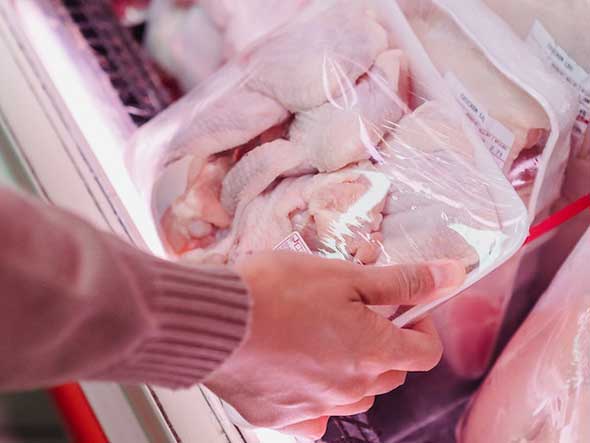Did you know that there are microplastics in meat, and they’re coming from many different sources? Whether you’re eating land animal meat like cows and chickens, or meat from fish and marine animals, you could be exposed to microplastics. Here’s exactly where they’re coming from and how to avoid them.
How Is Microplastic Ending Up In Meat?
Microplastics are everywhere – from remote mountain peaks to deep in the ocean, regardless of country. The animals living in these conditions inevitably end up consuming plastic, just as humans do.
The ocean is heavily polluted with plastic. It’s no surprise that we’ve found microplastics in canned fish, with up to five microplastics in each portion.
The majority of studies show that microplastics mostly end up in the stomach and gut of animals, which would mean that people are likely not consuming the microplastics from eating animal meat. However, another study shows that microplastics have been found in fish livers. This suggests that microplastics can move from digestive tissues into other body parts.
The same can be said for land animals. As chickens, cows, and pigs graze they are consuming microplastics. Though their meat may not contain microplastics, their digestive systems certainly do. One study found that chickens in Mexico had microplastics in their gizzards, which are commonly eaten in some areas of the world.
With that in mind, meat that comes in plastic packaging is also of concern. One study found that meat packaged in styrofoam trays contains plastic. These food trays, made from extruded polystyrene (XPS), release microplastics onto the meat, which then get stuck between the meat and plastic wrap. The particles left on the meat are not easy to remove by rinsing.
Mussels have also been shown to contain high levels of microplastics, with European consumer-grade mussels potentially containing 90 microplastics. Although this will vary from location to location, people who consume a lot of mussels may eat up to 11,000 microplastics a year from mussels alone.
How To Avoid Microplastics In Meat
Although it’s impossible to avoid microplastics in meat completely, there are a couple of things you can do to consume smarter. Most importantly, shop locally and avoid meat on plastic trays. Look for meat packaged in wax paper instead.
Farmers markets and small, local grocery stores are great places to start. Animals sourced locally are often treated better as well, in comparison with traditional factory farming. Win-win!
To learn more visit the Aim Plastic Free Website
In addition this study goes into details on this issue – Microplastic contamination of packaged meat: Occurrence and associated risks

